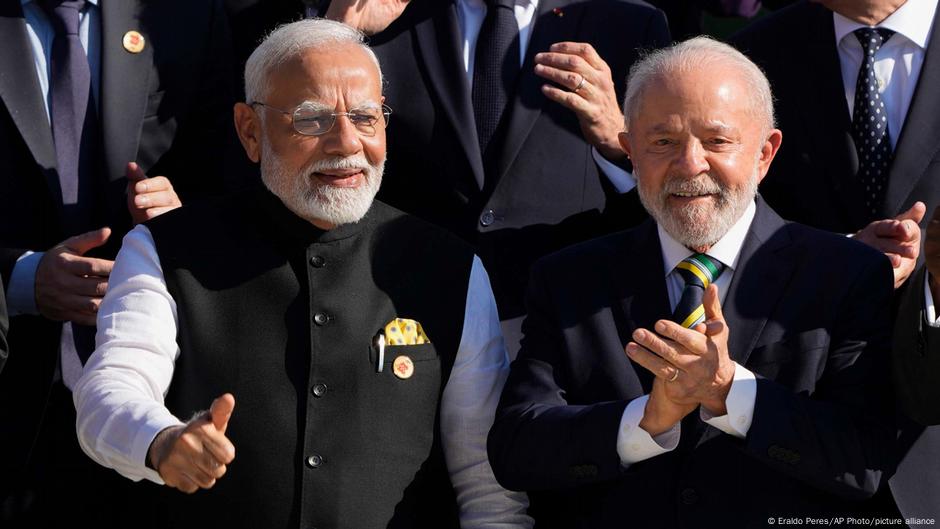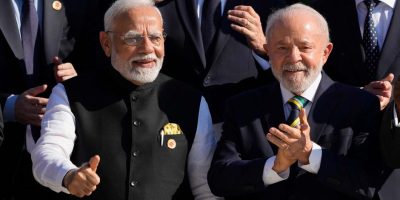Earlier this month, Brazil’s state-controlled oil giant Petrobras couldn’t have found a bigger event to unveil a major new customer. At the Brazil Energy Forum in Rio de Janeiro, the company’s director of logistics, commercialization and markets, Claudio Romeo Schlosser, said an agreement had been reached with India’s Bharat Petroleum Corporation for the delivery of 6 million barrels of oil annually between 2025 and 2026.
“We are expanding our international customer base. Until now, it has been heavily concentrated on China,” Schlosser said in Rio, before traveling to India 10 days later where the deal was finalized and signed on February 12.
Bharat Petroleum, which is owned by the Indian state, is the world’s third-largest importer of oil, securing most of India’s oil supply — roughly 85% of which was imported from other countries last year. The deal will be a massive boost to Petrobras’ exports to India, currently only about 4%.
Petrobras signed the deal with Bharat in the hope of expanding exports to India to 24 million barrels per year, Schlosser said.
The deal comes as India and Brazil are seeking to intensify their economic ties as members of the BRICS group of nations, which also includes Russia, China and South Africa.
Latin America’s pivot to diversifying trade
With the oil agreement, the government of Brazilian President Luiz Inacio Lula da Silva also wants to highlight the growing importance of India for Brazil’s foreign trade, after recently rejecting a chance to be part of China’s Belt and Road Initiative.
Rising geopolitical tensions make India an attractive partner for many countries in Latin America as it is perceived as independent and largely neutral in the power struggles between the US, China and Russia.
Trump trade wars: What’s next for India and the world?
And India, too, is seeking new economic ties as part of its geopolitical realignment that includes expanding its presence in Latin American countries.
Similar developments are taking place in Argentina, where state-owned oil company YPF signed a deal with three Indian firms in January to export up to 10 million tons of liquefied natural gas (LNG) annually. The agreement also covers cooperation in lithium, critical minerals, and hydrocarbon exploration and production, YPF said in a statement announcing the deal.
YPF CEO Horacio Marin sees the Asian market as being key to Argentina’s energy expansion plans. “We are convinced that the country has an opportunity to become an energy exporter and achieve the objective sought by the entire industry to generate revenues of $30 billion over the next 10 years,” said Marin.
In pursuit of ‘strategic autonomy’
Sabrina Olivera from the Argentine Council for International Relations (CARI) said India’s foreign policy had traditionally been characterized by “non-alignment” but was now evolving into what is now known as “strategic autonomy.”
“This means that India maintains relationships with as many players as possible without committing to alliances,” Olivera, the coordinator of CARI’s South Asia working group, told DW.
Now India is present at the negotiation table for all global issues, but it is not bound by military commitments.
Latin America holds significant growth potential for India, Olivera added, even though the country is less present in the region compared with, for example, the US, China, or the EU.
Olivera pointed to recent supplies of medical aid that India sent to Cuba following a devastating hurricane, saying that this strategy of forging closer political, economic, and cultural ties was well received across the Caribbean region.
And in Chile, which is known for its mineral wealth, she added, India’s ambassador to the country, Abhilasha Joshi, recently stated that the country was a “gateway to the rest of Latin America.”
India trusted as the world’s biggest democracy
India’s push into Latin America began two years ago with a widely noted visit by Indian Foreign Minister Subrahmanyam Jaishankar to Panama — the first in six decades of bilateral relations.
“Since Prime Minister [Narendra] Modi took office, our relations with Latin America and the Caribbean have taken a new direction,” Jaishankar said at the time, marking a shift toward greater Indian engagement in the region.
According to the Uruguay-based portal Dialogo Politico, trade between India and Latin America totaled $40 billion (€38.8 billion) in 2023. The region’s top trade partners with India are Brazil, Mexico, Argentina, Colombia, and Peru.
India primarily imports raw materials and exports automobiles, auto parts, pharmaceuticals, and textiles. Over the past decade, trade between the two regions has grown by 145%. However, it remains relatively small compared to China, whose trade with Latin America reached $480 billion.
Olivera says India is well aware that it “does not have the same material or military resources as China.” Nevertheless, it is trying to close the gap.
“The fact that India is the only democracy in Asia gives it an advantage in Latin America, where most countries in the region are democracies, trust in India is stronger than in China,” she told DW.
This article was originally written in German.


















